Share
Medical Matters: the Truth in Reconciliation
Back to MessengerRead time: 8 minutes
By Dr. Esther Tailfeathers
I would like to thank the College of Physicians & Surgeons of Alberta for dedicating this issue of The Messenger to First Nations, Métis and Inuit culture, partnerships and innovation, and for the opportunity to advocate for Indigenous Peoples’ health in this province.
According to the most current census (2021), the Indigenous population in Alberta is approximately 284,470, or 6.8% of people in Alberta. There are 45 First Nations in the province of Alberta, which sits on Treaty 6, 7 and 8 territories. The vast and diverse landscapes of Alberta mirror the diversity of languages and cultures of First Nations peoples.
There are eight Métis Settlements in Alberta—the first and only secure land base for Métis in Canada. With a combined population of greater than 127,000, the eight Métis Settlements include: Buffalo Lake, East Prairie, Elizabeth, Fishing Lake, Gift Lake, Kikino, Paddle Prairie and Peavine. The Métis Nation of Alberta, currently Otipemisiwak Métis Government, represents Métis people across the province.
There is also a significant Inuit population of nearly 3,000 in the province, with well-established communities in Edmonton and Calgary. Their languages and cultures make them unique in the Alberta landscape.
Health indicators
There are large, rich and diverse populations of Indigenous people in this province, but the health indicators tell us a different story. As of 2023, the life expectancy of First Nations people was 19 years less than non-First Nations people according to data from Alberta Health. Death by suicide is three times higher in First Nations populations and the infant mortality rate among Indigenous people has, at times, been nearly four times higher than among non-Indigenous people. According to the Alberta Opioid Response Surveillance Report, accidental opioid drug poisoning deaths per 100,000 were approximately seven times higher in First Nations people than non-First Nations people from January 1, 2020 to June 30, 2020.
All this data can be linked to the complex history of intergenerational trauma, poverty and poor health care delivery. Thanks to the work of Dr. Vincent Felitti, physicians understand the connection between adverse childhood experiences and risk factors for several leading causes of death. If we take Dr. Felitti’s work one step further and we understand the amount of abuse suffered by generations of children forced into Residential Schools, we see that the legacy of that abuse remains in the health indicators. Even without numbers, most frontline physicians see the disparity of patient representation in the emergency department, intensive care and trauma units. Many of us have had those late nights trying to figure out not only the etiology for a patient’s failing health, but also the reason for the disparaging numbers in Indigenous health.
A colonial past and present
Colonialism is not just historic. It is alive and present in our modern-day healthcare system. It is hard for me to write this knowing that many of my colleagues don’t understand how colonialism still exists to this day, and how it impacts both patient care and patient outcomes. It is hard not to write a celebratory essay for National Indigenous History Month—one which celebrates the equal health outcomes between non-Indigenous and Indigenous patients. It is hard to write this, as, in my Blackfoot ways, I do not want to hurt my non-Indigenous colleagues, many of whom dedicate themselves to Indigenous patients and communities. But I must begin in truth.
Modern day colonialism is seeing Indigenous people as not part of the system, not equal to and not deserving of the same services that all other Albertans have. Why? Because we are still considered “other than.”
It is not for lack of resources at the government level. For example, in February 2023, the Government of Canada announced plans to increase health funding to the provinces, including $2 billion over 10 years for Indigenous Health Equity. This initiative is designed to be flexible and include Indigenous-led approaches to improving health outcomes. Unfortunately, a governance model of transparency and accountability for the health transfer dollars on behalf of Indigenous people in this province has yet to be seen. I have heard Indigenous leaders say, “We are not beggars at this table, we are equal and bring resources to this table.”
The importance of including Indigenous leadership and representation at the governance level of health policy cannot be overstated. It is Indigenous people who know and understand the problems facing communities. Without our voices at the table, we cannot begin to create healthier communities. Without inclusion at health governance tables, decisions are made about Indigenous health from people who believe they know what is best for Indigenous people. That is colonialism in modern day.
Challenges accessing care
The biggest challenge all Albertans face in today’s healthcare system is access to services and to healthcare providers. But this issue has always existed for the majority of Indigenous people in this province.
Access is geographic. People from Fort Chipewyan pay $500 for one-way airfare to get to Fort McMurray or travel five hours on the winter road or five hours on the river to get to a doctor. People of Paul Band, only a short drive to Stoney Plain, hitchhike on the very busy Yellowhead Highway, risking their lives to try to get to a medical appointment, only to arrive and be told, “You can only ask for one thing. What will it be? Your diabetes medication or your blood pressure medication?”
Access is being welcome. Simply knowing that you are not welcome presents a barrier. For example, after many physicians left the Lethbridge area a few years ago, recruitment efforts still did not solve the problem of chronic unattachment of Indigenous patients. Even though they are citizens of the same city and live down the street from non-Indigenous folks, they are somehow still considered “other than.” They walk past doors they have never felt welcome to enter.
Access is meeting people where they’re at. In the breakdown of health mandates between the federal and provincial governments, there is no provision of Primary Care on any First Nations Reserve or Métis Settlement. As a result, the only primary care resources that flow across the reserve boundary are PCN supports, when available.
The Modernizing Alberta’s Primary Health Care System (MAPS) initiative was established to help answer these confounding problems. It gathered experts in Indigenous primary care, Indigenous health leaders and representatives of Alberta Health. The MAPS initiative included some wonderful calls to action, but like many reports, it now sits on a shelf. Only two organizations have successfully received funding for projects, and communities that asked for support are still waiting for answers.
If access to care was improved, perhaps we would see earlier detection of diseases like diabetes, cancer or chronic conditions. With earlier detection, we would likely see less burden in emergency, intensive care and surgery units. It only makes sense that investments upstream will result in greater returns on investment and therefore less morbidity and mortality. I hope we, as physicians, understand that the patients are not the problem, the system is.
Indigenous Wellness Core
In July 2020, AHS announced the creation of the Indigenous Wellness Core (IWC). Its vision was to achieve health equity with and for Indigenous peoples in Alberta by bringing alignment to the array of programs and services delivered to Indigenous peoples. Its mandate was to:
- Facilitate integration of systems across AHS
- Support equity-focused innovations
- Improve health outcomes through quality improvements and a measurement driven approach
- Create a workforce representative and inclusive of Indigenous people
- Develop meaningful partnerships with Indigenous communities and organizations in both urban and rural contexts
- Develop a provincial health strategy based on recommendations and calls to action
- Work with communities to identify high needs and actions which could be prioritized in order to begin to address the gaps in health outcomes.
The IWC worked diligently with Indigenous communities and organizations, Strategic Clinical Networks, Zone leadership and frontline workers, researchers and universities to establish priority actions, some of which included the following.
Culturally safe care
Many Indigenous patients do not feel safe in care spaces, therefore, the IWC sought to educate healthcare workers on cultural safety. I remember a gathering of a couple hundred frontline physicians, nurses and other caregivers in Enoch Cree Nation in response to a recorded event of racial slurs by AHS employees on my reserve. Under the leadership of Dr. Verna Yiu, we sat together, talked in sharing circles and came to an understanding that the treatment of Indigenous patients had to change. We heard from a lead ICU physician that Indigenous patients were often referred to by staff as “that ‘disease process’ in bed 3,” while non-Indigenous patients were referred to by their given name. His promise that day was to make sure that Indigenous patients were referred to by their given name, just like everyone else. I hope he kept his promise.
Research
Research done by Dr. Patrick McLane and Lea Bill under the Emergency Strategic Clinical Network used triage scores to establish racial bias in different emergency departments. This research helped prove that bias towards Indigenous people exists and can be measured. The work and those involved have committed themselves to change practice behaviour. In addition, Dr. Pam Roach, Tier 2 Canada Research Chair in Indigenous Health Systems Safety, did some very telling research on Alberta physicians’ perceptions of Indigenous patients. She then used the findings to develop decolonial approaches and culturally supportive initiatives for medical providers.
Ceremony
Another significant piece of the IWC’s work was proving that smoke from a smudge ceremony would not cause the fire alarms to go off in hospitals. AHS hospitals then adopted and supported ceremony in hospitals, thus helping all involved to recognize the importance of ceremony to health.
Physician coverage
In 2012, I remember flying into the northernmost community of Fort Chipewyan because they had not seen a physician for more than seven months. The IWC worked to develop an Indigenous Alternative Relationship Plan (ARP) to get more physicians for these communities. In the beginning, there were only five physicians, working less than 1 FTE, serving five or six communities. With much work and collaboration, there are now more than 90 physicians serving over 25 communities in this province.
Alberta Indigenous Virtual Care Clinic
During the COVID-19 pandemic, when no one was allowed into many of the Indigenous communities because of isolation, the Indigenous ARP began working with Indigenous Services Canada and the First Nations Technical Services Advisory Group to deliver virtual care services. This collaboration resulted in the Alberta Indigenous Virtual Care Clinic (AIVCC), which serves all Indigenous communities in Alberta, whether rural, remote or urban. The AIVCC has become a national award winner for innovation and service, and there is not a comparable service anywhere else in the country. This success is all due to the collaboration and commitment of primary care physicians in this province.
Mental Health and Addiction
Mental health and addiction is another very heavy and complex issue for us all. To address this problem, the IWC came up with a strategy for a Continuum of Care for Addictions. Much work went into a system in which many pieces were already in place under AHS Mental Health and Zone Services, as well as under the services provided on reserve. The trick was to bring a collaborative approach that welcomed people with addictions by using empathy and trauma-informed care. This plan was replaced with the new Recovery Oriented Systems of Care, which has yet to support culturally appropriate programs in Indigenous communities and has made treatment in many provincial public treatment centers even more inaccessible because of privatization.
Still work to do
As with any significant change, I am concerned that the collaborative work done under the AHS umbrella will be lost or dissolved when we transition to a new provincial health structure. I worry that the small but unified Indigenous Wellness Core will be divided up among the pillars of Primary Care, Acute Care and Mental Health and Addictions. This could leave many frontline workers, such as Indigenous Hospital Liaison workers, isolated and unable to make the most impact for their patients. The strategies developed from the IWC were made with years of engagement and inclusion of Indigenous voices. I am concerned that the careful monitoring of health outcome data will be shelved or ignored. I am apprehensive that Indigenous community leadership will lose even more trust in Alberta’s health care delivery, which will result in less collaboration and poorer health outcomes.
While challenges still lie ahead, our report card is not yet out. Could it be better? Certainly. But I am convinced that we won’t see better outcomes until we understand the issues at play, acting on the Canadian Medical Association’s promise to do better and the Truth and Reconciliation Commission’s Calls to Action. Physicians need to take the time to understand the bigger picture in Indigenous health and ask questions beyond the patient that sits before them. Know that the system in which we work is not inclusive of Indigenous voices at decision-making tables. Elevate and support the voices of Indigenous health leaders. Be good allies.
It is in the collective experience of what works, based on evidence, data and actions, that ultimately saves lives and improves quality of life. As scientists we know this, as humanitarians we are compelled to do better, as doctors we are fortunate to have been given the tools to make people’s lives better.
Hope is knowing that what comes tomorrow is better than what happened yesterday. I hope for a better tomorrow for Indigenous health in this province.
Thank you.
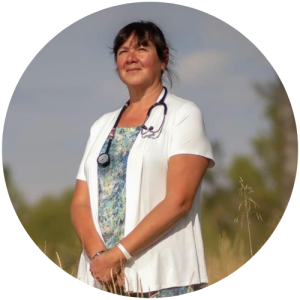 |
Dr. Esther Tailfeathers was born and raised on the Blood Reserve. She graduated from the University of North Dakota School of Medicine and completed her Family Medicine Residency in Edmonton at the University of Alberta. She has worked in many Native communities including the Blackfeet Reservation, the Blood Reserve for almost 20 years, and the remote northern community of Fort Chipewyan.
She was the Medical Lead of the Indigenous Wellness Core for AHS until June 2023. She is most proud of organizing a relief mission to Haiti after the earthquake, bringing a team of Blood Tribe paramedics, nurses and health care workers who took care of more than 2000 patients during their relief effort. Most recently, Dr. Tailfeathers has worked with her community in response to the fentanyl crisis, which started in fall 2014. Over the last 10 years, her work has concentrated on the opioid crisis and community strategies for harm reduction, treatment, and addressing upstream determinants in her home community. She is most proud of her two children. Elle-Maija Tailfeathers is an award-winning actor and filmmaker, winning the Canadian Screen Award for Best Performance by an Actress in a Leading Role for Night Raiders and, most recently, Outstanding Directorial Achievement in a dramatic series for Little Bird, Piinaakoyim Seen From Afar, She is a tribal council member for Blood Tribe and recently won the heavyweight title in Boxing at a recent tournament. |
Related News
All News & EventsJune 19, 2025
Innovative collaboration to support Indigenous and rural health care
June 19, 2025
From Treaty obligations to medical curriculum: embedding Indigenous health in physician training
June 19, 2025
Decolonizing health care: the role of immigrant health professionals
June 19, 2025
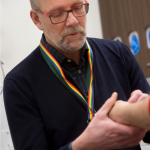
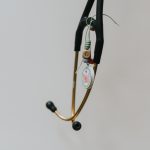
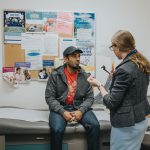
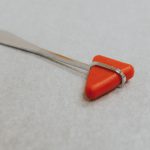
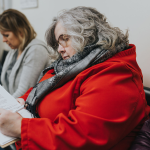

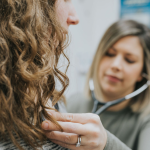

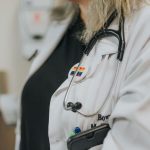


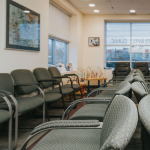
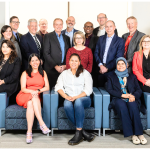
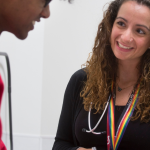
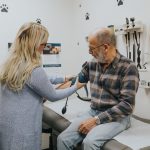
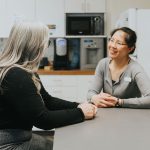

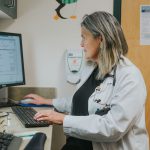
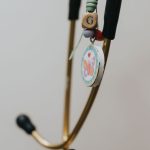

Comments for this post are now closed. If you would like to share your feedback on this topic, please email support@cpsa.ca.